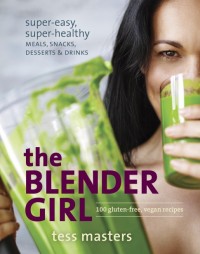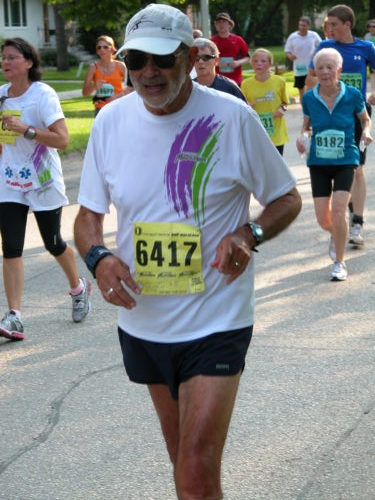First Impressions: Everything runners need to know about Apple Watch Series 4
Let’s just get right down to it. Is it time to dump your beloved old Garmin?
In just three short years, Apple has made a significant push into the wearable space with Apple Watch. Apple’s path to wrist ubiquity has been an at times bumpy one, releasing an initial watch had great ambition, but ultimately felt very much like a napkin sketch of a future idea. In retrospect, we probably got to witness a beta testing in public. It was actually a risky and maybe even brave move by a company (and its shareholders) that doesn’t have much room for big missteps. Series 1 set the table for the brilliant Series 2. Apple Watch has come such a long way in such a short period of time, and the company has never been content trying to move aging units, instead immediately going back into development and producing another, better version in short succession—even if it meant cannibalizing old stock sales. And for those of you wondering when it would be time to pounce, Series 4 feels like “the one.”
No one ever enjoyed the shackle that was the phone running armband. Apple Watch Series 3, which came out about a year ago, was such a sleek, functional revelation it seemed like it was uniquely designed by and for runners. It had GPS, loads of runner-specific features and apps, and it realized one of the great prognostications of science fiction: cellular capability. Being able to make a call sans phone is of value more so for runners than just about anybody else. Think about it: you can now phone home for help when you realize you’ve run too far and need someone to come pick you up. Finally, we live in the future!
Of course, many still bow at the alter of Garmin, as they’ve earned runners’ trust by being the most reliable player in the game since the invention of the GPS watch. But here’s the thing about Apple’s watch: it’s about as good, and as innovative, as the iPhone was when it took over the fledgling smartphone market a decade ago. Yes, others did it first, but Apple are just doing it better. At first, that statement might not have much of an impact on you. But take this into consideration: in just three years, Apple has designed a highly reliable and accurate GPS watch, that can make and take phone calls, stream 45 million songs, store 8 gigs of music, take and send messages and use pretty much which ever running tracker you prefer. And it’s a legitimately gorgeous time piece. Oh, and it’s cheaper than its running-specific direct competitors. Still not sure you can part with your trusty old Forerunner? Let’s take a look at some of the new features Apple packed into Series 4:
Rolling Pace
One of the surprises of this device from the beginning was how straightforward yet robust Apple’s “Activity” app has been. Unless you’re a Strava or Nike+ Run Club devotee, the Activity app is more than enough for most runners. It has a clean, highly customizable display, which can include up to five numbers, such as pace, overall distance, heart rate, and other important metrics. The newest addition is something called “rolling pace.” The watch basically grabs a snapshot of your current average pace at any point in your workout, going back a kilometre from where you are currently in the run. It’s useful for making micro-adjustments to your interval, or explaining why you’re suddenly feeling cooked on what was supposed to be an easy run.
Cadence
This was apparently one of the big requests from the running community, and interestingly Apple seems to be very keen to please. Pretty much every serious running watch can now use the accelerometer to measure cadence (how many footsteps you take on average over the course of one minute). Cadence can be useful for improving efficiencies in your stride.
Challenges

One of the design masterstrokes of this interface has been the three-ring layout of the Activity challenges. If you know anyone who owns an Apple Watch, you’ve probably heard them obsessing about hitting their “stand goal” for the day, or “closing their rings.” Apple clearly understand game theory, and have employed it in Apple Watch to make you want to wear it, and succeed at closing the “move,” “exercise” and “stand” rings, which are all customizable for any level of personal challenge. The problem always was a lack of real interactivity. As runners, this social aspect can be particularly important as a motivator, and a major reason why apps like Strava have dominated.
With Challenges, Apple Watch wearers can set up a seven-day fitness throw down among friends. Winners are rewarded with neat little virtual awards right in the watch.
Walkie Talkie mode and smack talk
With the WatchOs 5 update packed into Series 4, there’ s a neat little feature that turns your device into a walkie-talkie, so you can communicate with a training buddy, or someone at home in short bursts of communication.
One of the funnest aspects of the aforementioned Challenges feature is the aptly named “smack talk” feature embedded within, where you can send over little verbal jabs (or, if you’re feeling less feisty, kind words of encouragement) to your challenger. It’s a playful little add-on which also reveals that Apple’s engineers are obviously heavily invested in making sure their native fitness app experience is engaging.
Bigger, sharper screen
Apple quietly snuck up the size of the watch face from 38mm/42mm to 39mm/44mm in order to significantly expand the visual real estate on your wrist. The improvement is subtle at first, as previous generations of the watch’s face were excellent (and perhaps the best of any running watch on the market). But this little nudge up in size doesn’t compromise the fit and feel of the watch on your wrist, and makes the touch screen much easier to use. Think of this improvement as the watch equivalent of the iPhone X and other premium smartphones heading closer to being all screen and no bezel.
A more accurate heart rate monitor
One of the other subtle yet substantial physical improvements with Series 4 is the optical heart rate monitor on the inside of the device, which scans through your wrist. Apple upgraded it to sapphire crystal in order to more accurately pull your exact heart rate.
Added health features
The fancy saffire crystal hardware improvement means that Apple can get more aggressive with its Healthkit related offerings. Series 4 can now do a mini-ECG reading, and also alert you if your heart rate is either dangerously low, or high.
Wait a minute… there must be drawbacks
So, is this the best Apple Watch yet? Even though this is a “first impressions” look at the device, its safe to say that Apple are dialling in to the product we’d all envisioned a few years back. Series 4 feels like a fully thought-out, tested and resolved creation. It also is clearly being designed by a group populated with passionate runners, as there are just too many great (and nerdy) runner-specific features tucked into each hardware and software upgrade.
Of course, Apple Watch Series 4’s single biggest strength is ironically also potentially its one major flaw: it’s locked into the Apple ecosystem.
If you’re not an iPhone user, the Series 4 watch is still a great running companion (and sharp looking everyday watch), but it you won’t be able to close the loop of interactivity and the vast wealth of apps and other bells and whistles on offer. In a sense, without an iPhone, running with an Apple Watch feels like… running with an old GPS watch, albeit a much prettier one. But, if you like the majority of smartphone users on the planet and are entrenched in the cult of Mac, then Series 4 is a no brainer. Dollar for dollar, it’s the best watch (for running or otherwise) on the market right now.


















 Our Magazine
Our Magazine
